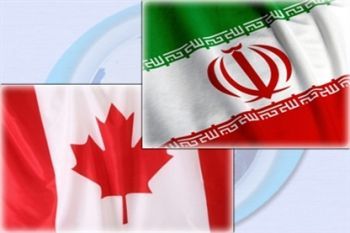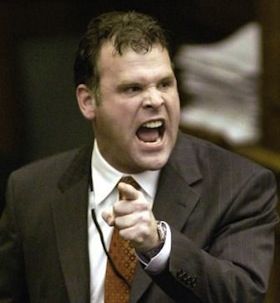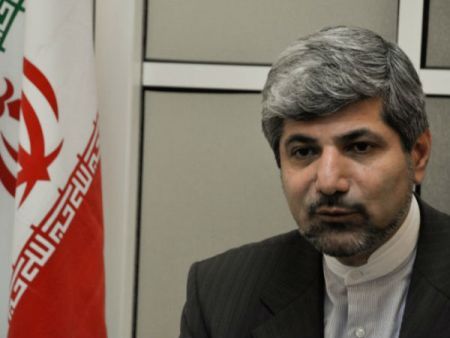
Publisher:
Bonnie King
CONTACT:
Newsroom@Salem-news.com
Advertising:
Adsales@Salem-news.com

~Truth~
~Justice~
~Peace~
TJP
Sep-09-2012 23:14

 TweetFollow @OregonNews
TweetFollow @OregonNews
What Happened, Canada?
Yuram Abdullah Weiler for Salem-News.comThe probable outcome of the Canadian diplomatic split with Tehran will be a net loss in Western intelligence and no appreciable economic fallout for Iran.
 Courtesy: Al Manar |
(DENVER Tehran Times) - “You cannot claim your eagerness for democracy, human rights and all these things and through unilateral sanctions try to put all sorts of suffering and inflict suffering and hardship on other people. This is a contradiction,” Iranian Foreign Minister Ali Akbar Salehi said at the Non-Aligned Movement summit in Tehran.
In a surprise step, on Friday Canadian Foreign Affairs Minister John Baird announced that Canada was severing diplomatic relations with Iran by closing its embassy in Tehran, and ordered the closure of the Iranian embassy in Ottawa along with the expulsion of Iranian diplomats. This step, of course, aligns Canada more closely with the U.S./Israeli position on Iran. Commenting on the announcement, which came from the sidelines of the Asia-Pacific conference in Vladivostok, the Canadian foreign affairs minister offered the following rationalizations for the abrupt action by his government:
1. Iran’s support for the government of Syrian President Bashar al-Assad;
2. Iran’s alleged “dishonesty” in its dealings with the IAEA over its nuclear dossier;
3. Iran’s support of Hezbollah, Hamas, and other resistance organizations deemed terrorist by the West; and
4. Iranian President Mahmoud Ahmadinejad’s allegedly inflammatory rhetoric directed at Israel.
 Canada's John Baird |
While the main reason touted by Baird for the hasty diplomatic measure was concern over the safety of Canadian diplomats in Tehran after the so-called assault on the British Embassy there in November 2011, others feel this may be a sign that a U.S.-sanctioned attack on the Islamic Republic is imminent. Presumably attempting to quell such speculation on foreknowledge of an impending Western-instigated attack on the Islamic Republic, the Canadian foreign minister remarked, “Unequivocally, we have no information about a military strike on Iran.”
Baird absurdly characterized Iran as the “most significant threat to global peace and security in the world today.” Countering this allegation, Globe and Mail columnist Doug Saunders wrote, “U.S. intelligence agencies and Israel’s military chief, Benny Gantz, have said recently they believe Iran is not pursuing nuclear weapons. There’s no suggestion of any Iranian military attack against any other country at the moment. The Iranian menace is all politics and potential.” The last 274 years of history testifies that Iran has maintained peaceful relations and has only resorted to military force in self-defense, such as during the 1980-1988 Iran-Iraq war. In fact, Iran has not acted aggressively toward any of its neighbors since 1738, when Nader Shah Afshar invaded India and returned with the Kuh-e Nur and Darya-ye Nur diamonds in his booty.
Technically, Canada has not had full diplomatic relations with Iran since 2007, when the former Canadian ambassador left Tehran after failing to agree on terms of diplomatic exchange. So when viewed from the context of its recent relations with Iran, the latest maneuver by Canada perhaps may not be quite as drastic as it is being portrayed by media outlets. However, the timing of the diplomatic rupture seems quite puzzling, for even at the height of the NATO campaign against Libya, Canada maintained diplomatic relations. It was not until August 2011 that Prime Minister Stephen Harper ordered the closure of the Libyan mission in Ottawa.
 Iran's Ramin Mehmanparast |
This latest act most likely will lead to increased tension. By cutting off diplomatic relations with Iran, Canada has chosen to follow the path the United States took 32 years ago by closing its direct channel of communications with Tehran. Without a direct link from either Washington or Ottawa to Tehran, the Western powers have reduced their ability to prevent a minor incident that might occur in the Persian Gulf from escalating into a major crisis. Canada and Britain were also the main conduits through which intelligence on Iran flowed to the United States.
From a broader perspective, of course, the Canadian action can be viewed as further kowtowing to the West, falling closer in line with the position of the Washington/Tel Aviv axis on Iran and Syria, thus helping to put increased diplomatic pressure on Russia and China. Canadian Foreign Affairs Minister John Baird has already informed Russian Foreign Affairs Minister Sergei Lavrov of the Canadian government’s chagrin over Russia’s support of the Assad government and its use of its veto power at the UN Security Council to block sanctions against Syria.
It is necessary to point out that these events are taking place in the context of a U.S. presidential election. With Democratic incumbent President Barack Obama neck-and-neck with Republican contender Mitt Romney, the last thing Obama would want is the “October surprise” of an Israeli attack on Iranian nuclear facilities to disrupt his campaign, so it is safe to assume that all efforts are being made to cool the Zionists’ aggressive ardor. Also suggesting that now may not be the time is a perception that a President Romney would be in tighter lockstep with Tel Aviv than would a second-term Obama, judging by Romney’s strong stance in support of Israel’s “right to strike Iran in self-defense.” And judging by outside campaign contributions from top spenders, Romney may just be elected as Tel Aviv’s next man in Washington since he is pulling in 4 dollars for every dollar that is going to Obama.
Noteworthy is the fact that Canada’s move comes in the wake of the recent Non-Aligned Movement summit hosted by Tehran. The increasing empathy other countries are showing for Iran’s position in its dispute with the West can be gauged by the success of the NAM summit, the importance of which was underscored by the “controversial” attendance of UN Secretary General Ban Ki-moon. Also attending the summit, hosted by predominantly-Shia Iran, was Egypt’s newly elected president from the Sunni-aligned Muslim Brotherhood, Mohamed Morsi. The extravaganza, which was covered by a huge international press corps, which even included seven American reporters, was a major diplomatic coup for Tehran.
Iran has shown remarkable resiliency in the face of ever-tightening U.S.-imposed economic sanctions and has gathered significant support to counter them by strengthening ties with its Asian neighbors. Most likely, the main result of the Canadian diplomatic split with Tehran will be a net loss in Western intelligence and no appreciable economic fallout for Iran, which continues to strengthen its position in the Asia-Pacific energy market. In short, this latest move by Canada most likely will result in greater harm to the United States and its allies than to Iran.
 |
 |
 |
 |
 |
 |
 |
Articles for September 8, 2012 | Articles for September 9, 2012 | Articles for September 10, 2012


Quick Links
DINING
Willamette UniversityGoudy Commons Cafe
Dine on the Queen
Willamette Queen Sternwheeler
MUST SEE SALEM
Oregon Capitol ToursCapitol History Gateway
Willamette River Ride
Willamette Queen Sternwheeler
Historic Home Tours:
Deepwood Museum
The Bush House
Gaiety Hollow Garden
AUCTIONS - APPRAISALS
Auction Masters & AppraisalsCONSTRUCTION SERVICES
Roofing and ContractingSheridan, Ore.
ONLINE SHOPPING
Special Occasion DressesAdvertise with Salem-News
Contact:AdSales@Salem-News.com

googlec507860f6901db00.html

Terms of Service | Privacy Policy
All comments and messages are approved by people and self promotional links or unacceptable comments are denied.
[Return to Top]
©2025 Salem-News.com. All opinions expressed in this article are those of the author and do not necessarily reflect those of Salem-News.com.